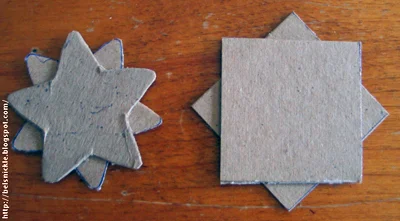I discovered these old ornaments inside a box of Christmas things two summers ago and wondered at their fragility. I knew immediately that these were made from wood shavings because my husband builds furniture in his spare time. He works so very hard and dreams of the day he will someday be free to retire and take up his craft full time, perhaps he will even build a little wood shop out back?
In any case, I have often wondered just what I could make with all of the piles of wood curls that heap up on the floors of our garage in mid-winter.
Upon I discovering these shaved beauties, I thought how delicate, how sweet! But they are too fragile! Who would invest so much energy into something as difficult to preserve as snow? Well, I suppose there must be folks on the internet who have had similar ideas...
- Scandinavian Wood Shaving Ornaments
- How to Make Wood Shaving Ornaments
- 10 Favorites: Scandi-Style Christmas Ornaments
In order to make similar ornaments like the stars shown here, you will need: a shallow plastic tub for soaking the wood curls, wood shaved curls, bobbie pins, tacky craft glue, and patience. Do not dry the wood curls in an oven as you glue these together. I know that one of the links above suggests this but visitors here should know that some trees contain natural poisons. Their toxins may be released into the environment through heat and you certainly don't want these toxins in a place where you prepare your food! Also it doesn't take very long for such fine shavings to dry out. You may place the stars near a heating vent if you need them to dry quicker.
After the wood shavings have soaked a bit, stretch these out and shape them as you like. They can be snipped apart with ordinary scissors and pined into shapes with bobbie pins or clothes pins as they dry. Then glue them into star shapes or snowflakes using tacky glue. Let them dry over night before decorating the Christmas tree or windows with them. You may use hot glue if you prefer, to assemble your creations.













